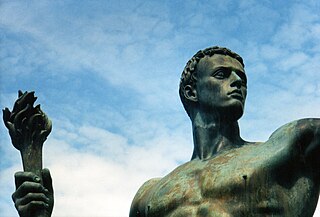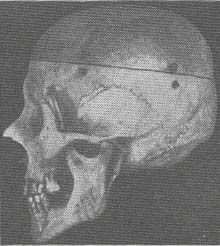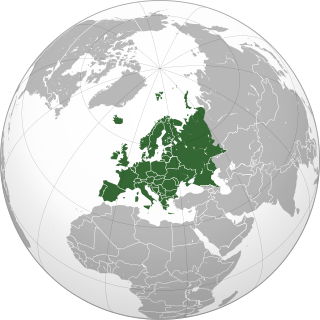
Auto racing is a motorsport involving the racing of automobiles for competition.
Formula One is the highest class of single-seater auto racing sanctioned by the Fédération Internationale de l'Automobile (FIA) and owned by the Formula One Group. The FIA Formula One World Championship has been one of the premier forms of racing around the world since its inaugural season in 1950. The word "formula" in the name refers to the set of rules to which all participants' cars must conform. A Formula One season consists of a series of races, known as Grands Prix, which take place worldwide on purpose-built circuits and on public roads.

Racism is the belief in the superiority of one race over another. It may also include prejudice, discrimination, or antagonism directed against other people because they are of a different race or ethnicity, or the belief that members of different races or ethnicities should be treated differently. Modern variants of racism are often based in social perceptions of biological differences between peoples. These views can take the form of social actions, practices or beliefs, or political systems in which different races are ranked as inherently superior or inferior to each other, based on presumed shared inheritable traits, abilities, or qualities.
A race is a grouping of humans based on shared physical or social qualities into categories generally viewed as distinct by society. The term was first used to refer to speakers of a common language and then to denote national affiliations. By the 17th century the term began to refer to physical (phenotypical) traits. Modern scholarship regards race as a social construct, an identity which is assigned based on rules made by society. While partially based on physical similarities within groups, race is not an inherent physical or biological quality.
The Aryan race is a now outdated term that emerged in the period of the late 19th century and mid-20th century to describe people of Indo-European heritage as a racial grouping.

The master race is a concept in Nazi ideology in which the putative Nordic or Aryan races, predominant among Germans and other northern European peoples, are deemed the highest in racial hierarchy. Members of this alleged master race were referred to as Herrenmenschen.

An ethnic group or ethnicity is a category of people who identify with each other, usually on the basis of a presumed common genealogy or ancestry or on similarities such as common language or dialect, history, society, culture or nation. Ethnicity is often used synonymously with the term nation, particularly in cases of ethnic nationalism, and is separate from but related to the concept of races.
White people is a racial classification specifier, used mostly and often exclusively for people of European descent; depending on context, nationality, and point of view. The term has at times been expanded to encompass persons of Middle Eastern and North African descent, persons who are often considered non-white in other contexts. The usage of "white people" or a "white race" for a large group of mainly or exclusively European populations, defined by their light skin, among other physical characteristics, and contrasting with "black people", Amerindians, and other "colored" people or "persons of color", originated in the 17th century. It was only during the 19th century that this vague category was transformed in a quasi-scientific system of race and skin color relations.

The Dinaric race, also known as the Adriatic race, were terms used by certain physical anthropologists in the early to mid-20th century to describe the perceived predominant phenotype of the contemporary ethnic groups of southeast Europe.
Multiracial is defined as made up of or relating to people of many races. Many terms exist for people of various multiracial backgrounds. Preferred terms include multiracial, biracial, multiethnic, polyethnic, Métis, Creole, Dougla, mestizo, mulatto, Melungeon, Criollo, quadroon, zambo, Eurasian, hapa, hāfu, garifuna and pardo. There are various other terms used that are considered insulting and offensive, such as "half," "half-and-half," and "mixed."
The European Grand Prix was a Formula One event that was introduced during the mid-1980s and was held every year from 1993 to 2012, except in 1998. During these years, the European Grand Prix was held in a country that hosted its own national Grand Prix at a different point in the same season, at a different circuit. The race returned as a one-off in 2016, being held on a street circuit in Baku, Azerbaijan; this event was renamed the Azerbaijan Grand Prix in 2017.

The Caucasian race is a grouping of human beings historically regarded as a biological taxon, which, depending on which of the historical race classifications is used, has usually included ancient and modern populations from Europe, Western Asia, Central Asia, South Asia, North Africa, and the Horn of Africa.

Scientific racism, sometimes referred to as race biology, is a pseudoscientific belief that empirical evidence exists to support or justify racism, racial inferiority, or racial superiority. Historically, scientific racism received credence throughout the scientific community, but it is no longer considered scientific.
The Nordic race was one of the putative sub-races into which some late-19th to mid-20th century anthropologists divided the Caucasian race. People of the Nordic type were mostly found in Scandinavia, Northwestern Europe, and countries surrounding the Baltic Sea, such as Germans and Finnic peoples. The psychological traits of Nordics were described as truthful, equitable, competitive, naïve, reserved and individualistic. Other supposed sub-races were the Alpine race, Dinaric race, Iranid race, East Baltic race, and the Mediterranean race.

The Mediterranean race is one of the multiple sub-races into which the Caucasian race was categorised by most anthropologists in the late 19th to mid-20th centuries. According to various definitions, it was said to be prevalent in the Mediterranean Basin and areas near the Mediterranean, especially in Southern Europe, North Africa, most of Western Asia, the Middle East or Near East; western Central Asia, parts of South Asia, and parts of the Horn of Africa. To a lesser extent, certain populations of people in parts of Great Britain, western Ireland, and Southern Germany, despite living far from the Mediterranean, were deemed as potentially having some minority Mediterranean elements in their population, such as Bavaria, Wales and Cornwall.
White Americans are an ethnic group of Americans who are descendants from any of the indigenous peoples of Europe, the Middle East and North Africa, or in census statistics, those who self-report as white based on having majority-white ancestry. White Americans constitute the historical and current majority of the people living in the United States, with 72% of the population in the 2010 United States Census. Non-Hispanic whites totaled about 197,285,202 or 60.7% of the U.S. population. European Americans are the largest ethnic group of White Americans and constitute the historical majority population of the United States since the nation's founding.
Race and ethnicity in the United States is a complex topic because the United States of America has a racially and ethnically diverse population. At the federal level, race and ethnicity have been categorized separately.

Nazism and race concerns the Nazi Party's adoption and further development of several hypotheses concerning their concept of race. Classifications of human races were made and various measurements of population samples were carried out during the 1930s.

"Aryan" has as its root a term that was used as a self-designation by Indo-Iranian people. The term was used by the Indo-Aryan people of the Vedic period in India as an ethnic label for themselves and later refer to the noble class as well as the geographic region known as Āryāvarta, where Indo-Aryan culture is based. The Iranian people used the term as an ethnic label for themselves in the Avesta scriptures, and the word forms the etymological source of the country name Iran. It was believed in the 19th century that Aryan was also a self-designation used by all Proto-Indo-Europeans, a theory that has now been abandoned. Scholars point out that, even in ancient times, the idea of being an "Aryan" was religious, cultural and linguistic, not racial.
The European Race Walking Cup is a race walking event established in 1996, and organised by the European Athletic Association. In 1996, the team scores were calculated by aggregating the points awarded to the first three finishers. From 1998, team scores were calculated by aggregating the positions of the first three finishers (seniors) or two finishers (juniors).












